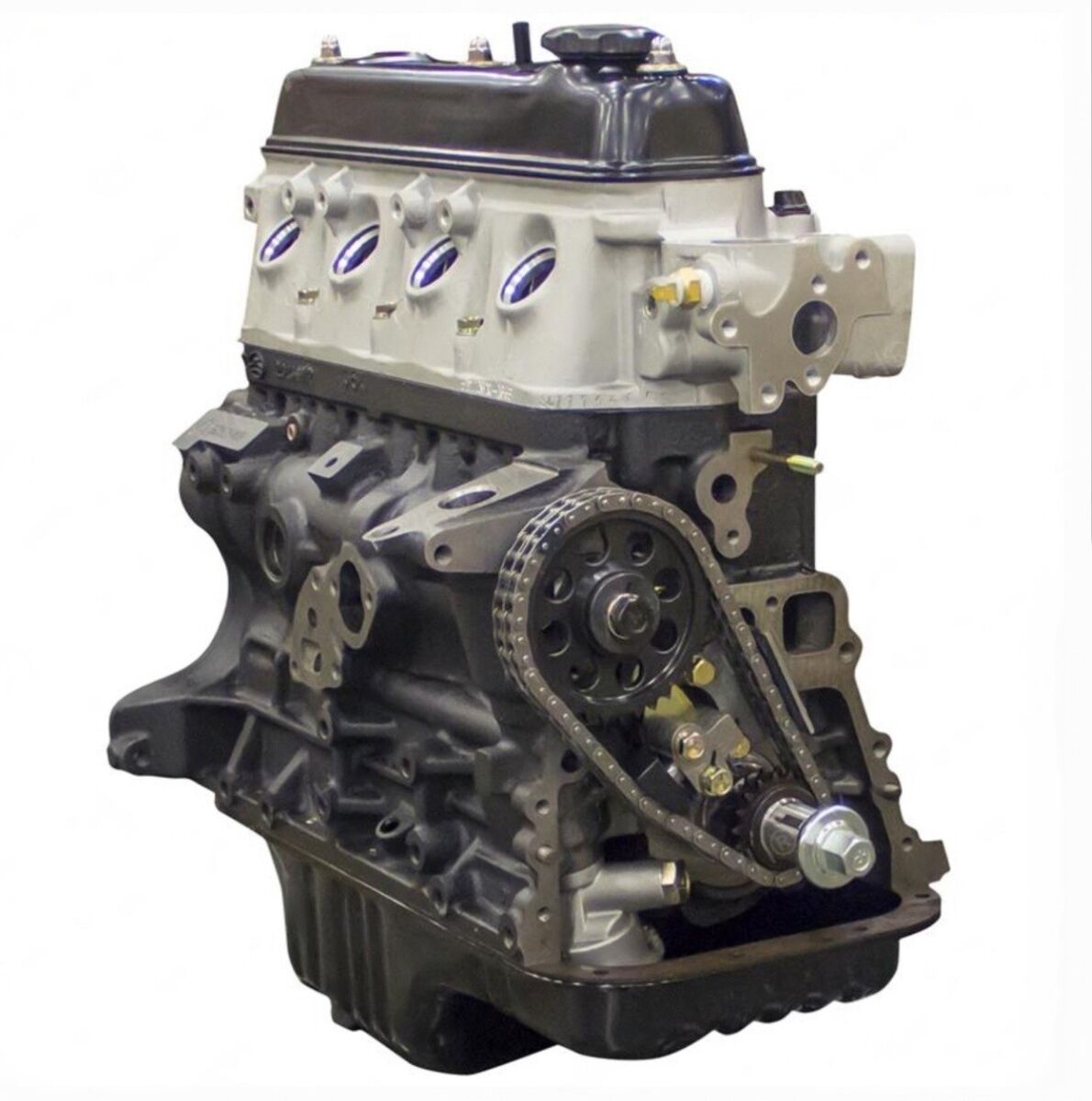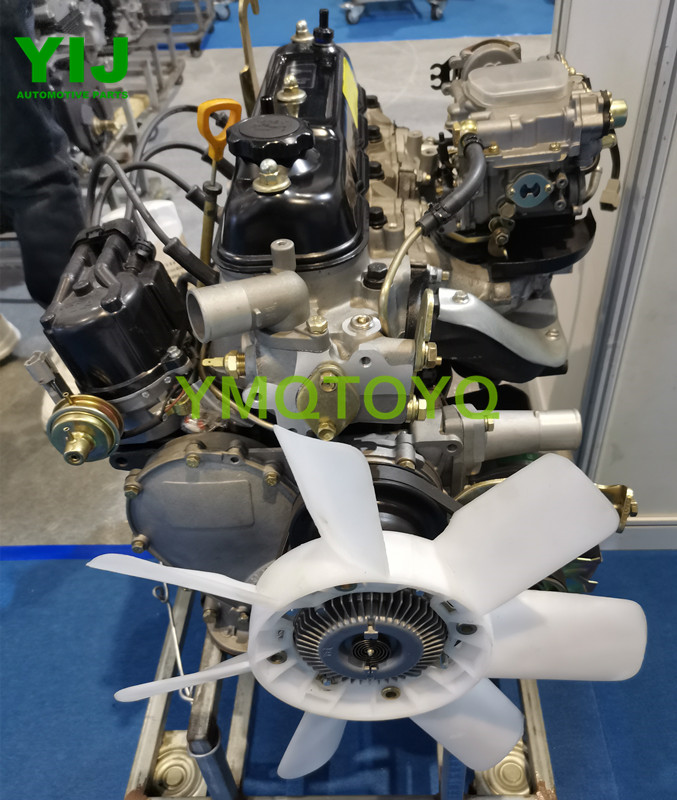The Role of the 4Y Engine in the Automotive Industry’s Evolution
Checking Out the Numerous Kinds Of Engine: Which One Fits Your Demands?
Interior burning engines continue to control due to their integrity, while electric engines are gaining traction for their sustainability. Hybrid engines offer a functional concession, and diesel engines stand out for their power in demanding applications.

Inner Combustion Engines
Internal burning engines (ICEs) are the backbone of modern-day transportation, powering a huge variety of vehicles from autos to planes. These engines operate the concept of converting gas right into mechanical energy via a series of regulated explosions within a burning chamber. The most usual kinds of ICEs include gas engines, diesel engines, and rotary engines, each designed to satisfy particular performance and effectiveness demands.
Gas engines typically use spark ignition, while diesel engines rely on compression ignition, leading to distinct differences in gas efficiency and power outcome (4y engine). Rotating engines, or Wankel engines, offer a small style and smooth procedure, yet are much less typically used in mainstream applications
ICEs have undergone considerable advancements in innovation, consisting of the intro of turbocharging and fuel shot systems, which enhance general performance and efficiency. Regardless of their effectiveness renovations, ICEs encounter increasing examination because of their ecological influence, especially relating to greenhouse gas exhausts. As the automotive industry develops, the future of ICEs stays a subject of dispute, stabilizing efficiency, performance, and ecological factors to consider. They continue to play an essential role in worldwide transportation infrastructure.
Electric Engines
As concerns concerning ecological sustainability and fossil fuel dependency grow, electric engines have actually emerged as a compelling alternative to inner combustion engines. These engines use electrical motors powered by batteries or fuel cells, offering a cleaner and much more efficient motive powers.
Among the key advantages of electric engines is their lowered discharges. Unlike conventional engines that burn nonrenewable fuel sources, electrical engines produce absolutely no tailpipe discharges, considerably lowering air contamination and contributing to improved public wellness. Furthermore, the efficiency of electrical motors typically surpasses that of inner combustion engines, transforming a better proportion of power from the source of power into functional power for activity.
Electric engines are also notable for their silent operation, making them ideal for metropolitan environments. 4y engine. The simpleness of their layout leads to fewer relocating parts, which can cause reduced upkeep costs and boosted dependability in time
Nonetheless, challenges stay, consisting of battery production effects, billing framework, and range restrictions. Regardless of these hurdles, the expanding financial investment in electric automobile innovation and renewable resource sources points towards an appealing future for electric engines, placed to play an essential role in the transition toward sustainable transport.
Hybrid Engines
Blending the advantages of both typical and electric internal combustion engines, hybrid engines represent a flexible remedy in the quest for reliable and sustainable transportation. These engines integrate a gas or diesel motor with an electrical motor, permitting boosted fuel performance and lowered emissions compared to conventional cars.
Hybrid engines run in numerous settings, making use of the electrical motor for low-speed driving and the inner burning engine for greater rates or when more power is needed. This dynamic operation not just boosts gas economy but also adds to a smoother driving experience. Regenerative stopping is another important attribute, recording energy typically lost throughout braking and redirecting it to reenergize the battery.

As customers progressively prioritize eco-friendliness, crossbreed engines stick out as a useful choice, providing an efficient equilibrium of performance, efficiency, and ecological responsibility. This flexibility makes them suitable for city travelling and long-distance travel alike.
Diesel Motor
Efficiency and power are trademarks of diesel engines, which have actually long been preferred for their effectiveness and fuel economy. These engines operate the principle of compression ignition, where air is compressed to a high temperature level before gas is injected, sparking it without the requirement for ignition system. This process makes it possible for diesel engines to attain higher thermal effectiveness contrasted to gasoline engines, converting into much better gas mileage and lower co2 exhausts.
Diesel motor are especially appropriate for sturdy applications view such as vehicles, buses, and industrial machinery, where torque and resilience are extremely important. Their design usually consists of more powerful parts to withstand the higher pressures created during operation, resulting in longer life span and decreased maintenance expenses.

Alternate Fuel Engines
While diesel engines have long dominated the landscape of durable source of power, alternate gas engines are getting grip as sensible choices for an extra sustainable future. These engines make use of a selection of fuels, such as compressed all-natural gas (CNG), lp, ethanol, and hydrogen, intending to lower greenhouse gas discharges and reliance on fossil fuels.
One significant benefit of different gas engines is their possible to lower carbon impacts. For circumstances, CNG engines send out fewer toxins contrasted to typical diesel engines, making them ideal for metropolitan transportation systems and fleets seeking to improve air quality. Ethanol, derived from biomass, not just lowers emissions but likewise supports farming economic situations.
Hydrogen fuel cells stand for an innovative growth in this realm, supplying zero-emission power through a chain reaction in between hydrogen and oxygen. Obstacles such as facilities development and production costs stay challenges to prevalent adoption.
Final Thought
To conclude, picking the appropriate engine type necessitates cautious factor to consider of details demands and choices. Internal burning engines offer reliability, while electric engines prioritize sustainability and decreased maintenance. Hybrid engines incorporate the advantages of both, enhancing efficiency, whereas diesel engines provide remarkable power and special info torque for durable applications. Alternate fuel engines present environment-friendly options, albeit with potential infrastructure challenges. Ultimately, click for source an extensive assessment of driving habits and environmental values will certainly promote an educated choice relating to engine choice.
Hybrid engines provide a versatile concession, and diesel engines stand out for their power in requiring applications. The most common kinds of ICEs consist of fuel engines, diesel engines, and rotary engines, each designed to fulfill certain performance and efficiency demands.
Unlike conventional engines that burn fossil fuels, electrical engines create zero tailpipe exhausts, dramatically reducing air contamination and adding to improved public wellness.Hybrid engines operate in numerous modes, making use of the electric motor for low-speed driving and the inner combustion engine for greater speeds or when more power is needed. Crossbreed engines combine the advantages of both, boosting efficiency, whereas diesel engines give premium power and torque for sturdy applications.